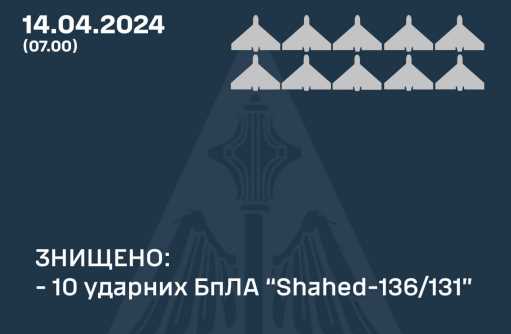Understanding the Recent Russian Drone Attacks on Ukraine
The ongoing conflict in Ukraine has taken a new turn with the recent deployment of combat drones. In a notable incident, Russian forces launched an attack using 10 «Shahed-131/136» drones from the Kursk region and four guided anti-aircraft missiles, specifically the S-300/S-400, from the occupied Donetsk region. Thankfully, thanks to the diligent efforts of the Ukrainian Armed Forces, all of these drones were successfully intercepted in the Kharkiv region.
### The Role of Technology in Modern Warfare
This incident underscores the critical role that advanced military technology plays in contemporary conflicts. Drones, once considered a novelty, have now become a key component of warfare. The «Shahed» drones, which are particularly notorious for their versatility and range, highlight how nations are increasingly relying on unmanned aerial systems to conduct operations.
**Examples of Drone Utilization:**
— **Surveillance:** Drones are often used to gather intelligence on enemy movements, providing real-time data that can inform strategic decisions.
— **Targeted Strikes:** Their precision allows for targeted strikes with minimal collateral damage, a stark contrast to traditional bombings.
### Effective Defense Strategies
The successful interception of the «Shahed» drones in Ukraine can be attributed to a well-coordinated defense strategy. Ukrainian anti-aircraft missile troops and mobile fire groups demonstrated remarkable efficiency during this operation. According to analysis, effective drone defense strategies can increase interception rates significantly, with some Ukrainian units reportedly achieving near-complete shutdowns during peak operational periods.
— **Training and Preparedness:** Regular training exercises ensure that military personnel are ready to respond quickly to aerial threats.
— **Coordination between Units:** Enhanced communication allows for real-time updates and faster responses to attacks.
### Statistical Insights and the Bigger Picture
As reported by various defense analysts, the use of drones in warfare has surged, with estimates indicating that over 70% of military forces worldwide are integrating drone technology into their operations. This shift has profound implications, not just for combat tactics but for international relations and defense policies as well.
### Conclusion: The Future of Warfare
The recent drone attack serves as a reminder of the persistent threat posed by aerial warfare and the continuous evolution of military strategies. As nations adapt and innovate, the importance of a resilient defense becomes even clearer.
For those interested in following these developments, staying informed through reputable sources such as *The International Institute for Strategic Studies* or *Jane’s Defence* can provide valuable insights into the changing landscape of modern warfare. Understanding these dynamics not only enriches our perspective on current events but also prepares us for the complexities of tomorrow’s global stability.






